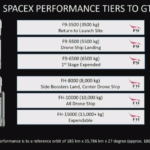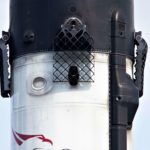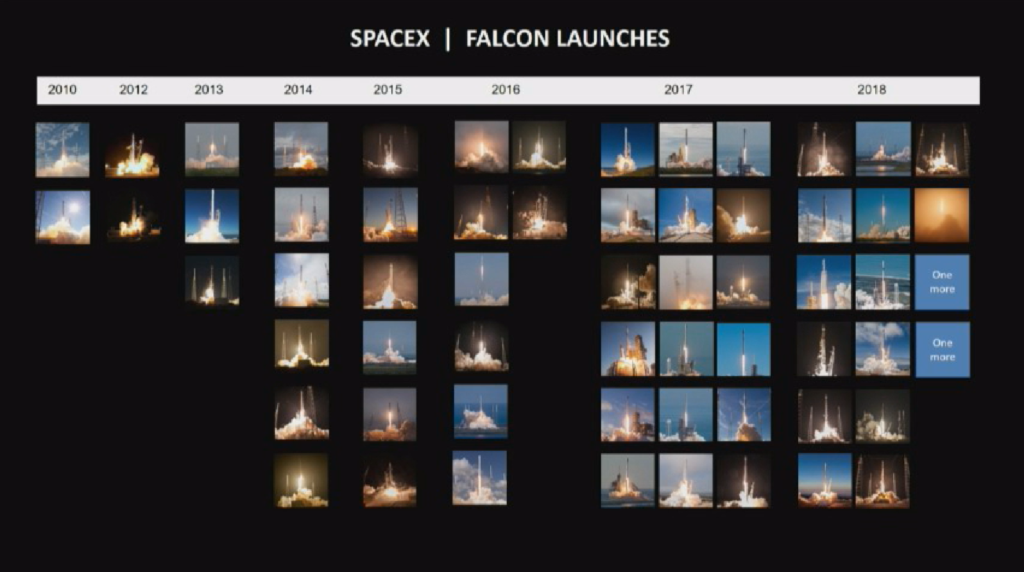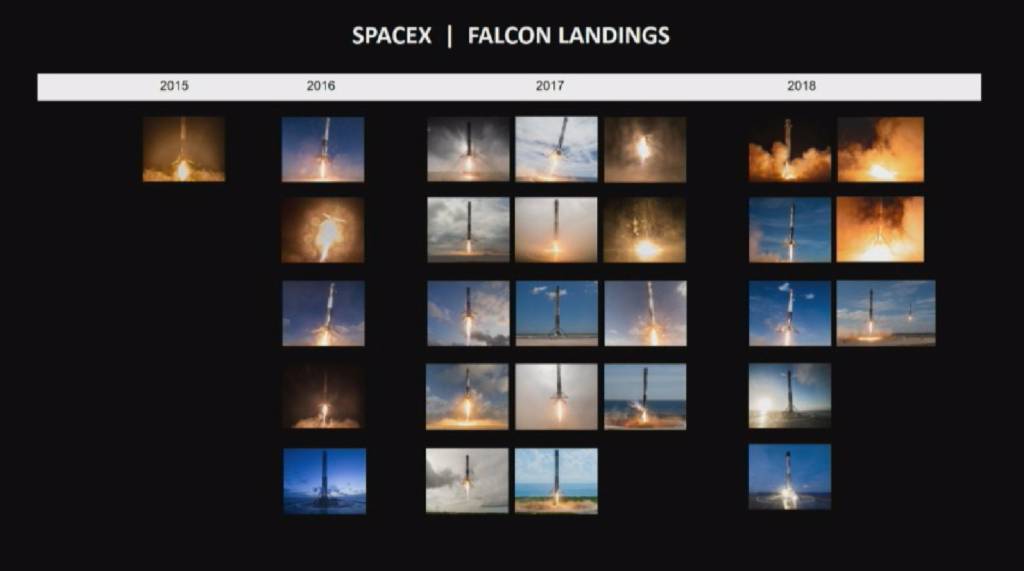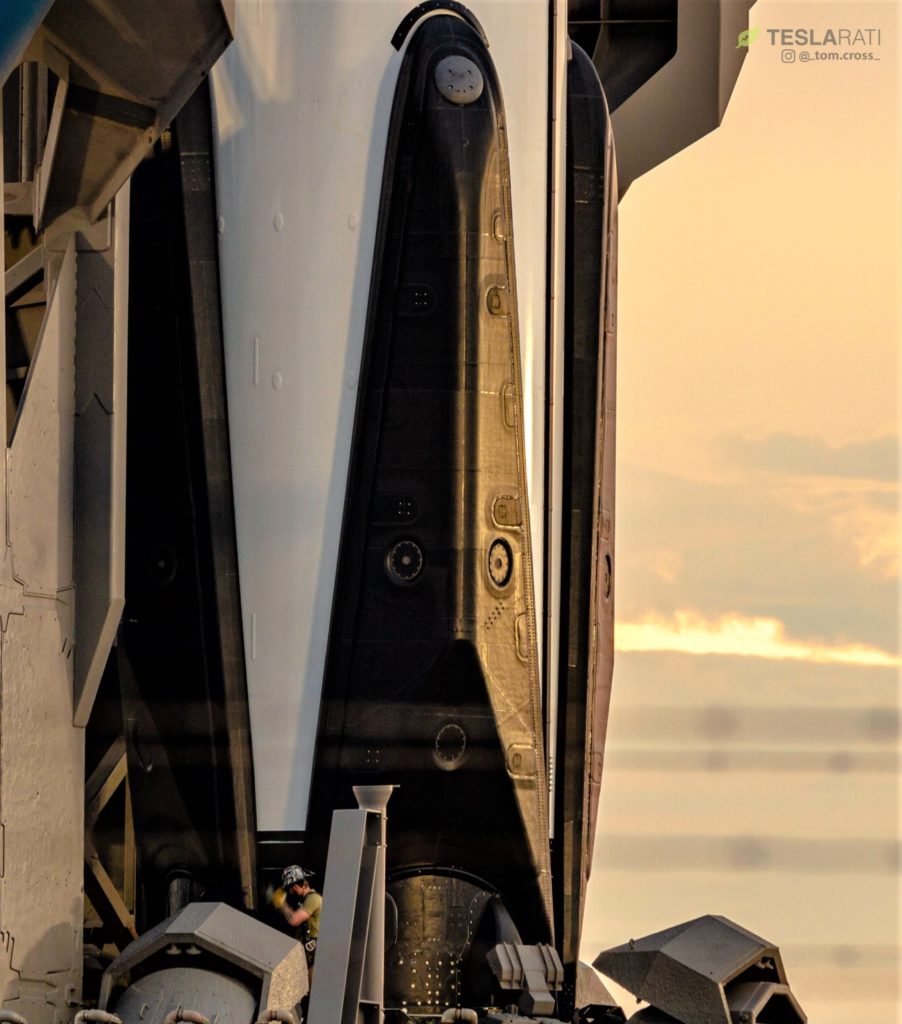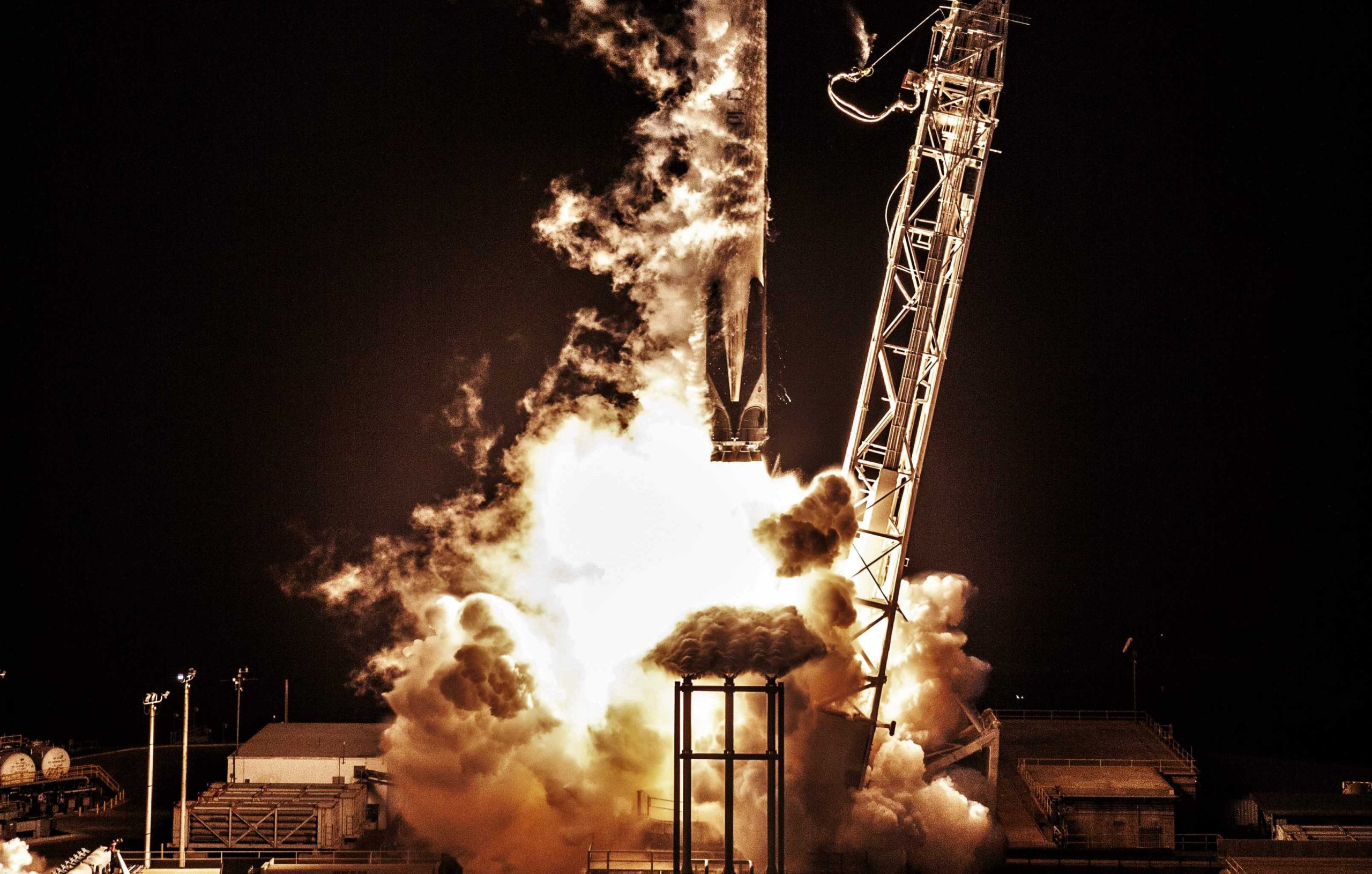
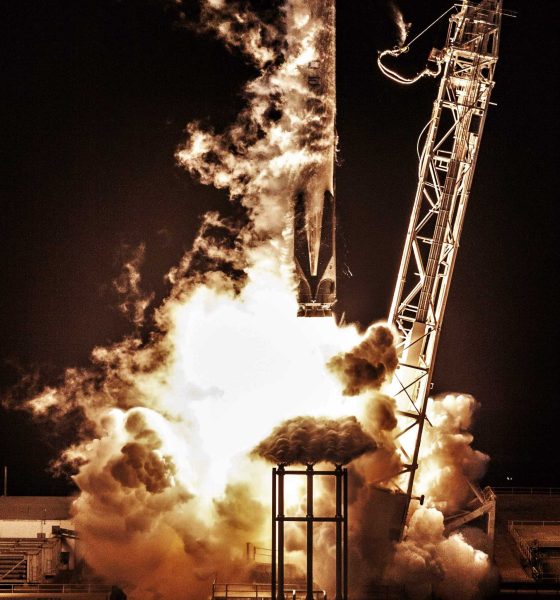
SpaceX
SpaceX plans Falcon 9 satellite launch from Pad 39A prior to Crew Dragon, Falcon Heavy
SpaceX plans to launch one final commercial Falcon 9 mission from Pad 39A before much of the historic facility’s availability is taken over Crew Dragon and Falcon Heavy launch needs, perhaps as soon as December 2018.
The reason for the decision to launch a routine Falcon 9 mission from 39A – while Launch Complex-40 (LC-40) is (presumably) perfectly available – is unknown, but it can likely be pinned down to launch schedule assurance and pad shakedowns ahead of the flight debut of Crew Dragon, NET January 2019.
SpaceX Falcon 9 launch with Es’hail-2 has turned up on the Eastern Range as NET November 14. This launch will take place from 39A. Cool photo from Nathan Barker (@NASA_Nerd) from this week below:
Range shows this is an ASDS landing for the booster.
As always, subject to change. pic.twitter.com/yydKuOVXrP
— NSF – NASASpaceflight.com (@NASASpaceflight) October 17, 2018
Dragons’ rule
Ultimately, the decision to move the launch of commercial communications satellite Es’Hail-2 to Pad 39A likely boils down to a desire to preserve the delay-sensitive CRS-16 Cargo Dragon launch (NET November 27) while also acting as a sort of ad-hoc shakedown for the pad. 39A has undergone a large number of Crew Dragon-related modifications – some visible but most not – and will have been dormant (at least launch-wise) since Falcon 9 Block 5’s debut six months prior.
Whether or not it’s truly needed, another Falcon 9 launch from the pad will presumably allow SpaceX to work out any new kinks in 39A’s updated ground support infrastructure and perhaps refamiliarize the company’s East Coast launch crew after half a year focused on LC-40 operations. Es’Hail-2 is a ~3000 kg (~6600 lb) geostationary communications satellite to be operated by Qatari company Es’hailSat once it arrives at its final operational orbit.
Despite a recent presentation from SpaceX VP of Reliability Hans Koenigsmann stating that Falcon 9 is capable of returning to launch site (RTLS; i.e. a Landing Zone recovery) while still placing 3500 kg into a geostationary transfer orbit (GTO), SpaceX has filed this launch as an ASDS (autonomous spaceport drone ship) recovery, meaning that it will land aboard Of Course I Still Love You (OCISLY) shortly after launch. Delayed from August 2018, SpaceX may be trying to partially make up for that slip by placing Es’Hail-2 sat in as high of a transfer orbit as possible, potentially cutting weeks or even months off of the time required for the satellite to climb uphill to its operational orbit.
- A welcome update to SpaceX’s Falcon 9 and Heavy performance with and without booster recovery. (SpaceX)
- SpaceX’s most recent Florida launch was in early September. (Tom Cross)
An East Coast lull
Unusual for SpaceX in an otherwise meteoric year filled with numerous major ‘firsts’ and the company’s most productive launch cadence yet, there will be a two-month lull in launches from the East Coast between Telstar 18V (September 10) and Es’Hail-2 (NET November 14), interrupted only by the spectacular October 7 launch of SAOCOM 1A in California. Barring any additional issues, SpaceX will likely crest its 2017 launch record (18 missions) by 3 or 4 missions, not quite the 25-30 launches much of the company’s leadership was probably hoping for, but still an extremely impressive number.
Despite the fact that launch delays are never pleasant (much like if Christmas were pushed back weeks or months to wait for sleigh and present availability), the willingness to significantly delay launches or fall short of targets (assuming payload availability has not been the long pole) is actually a very good thing. Within reason, inconvenient delays tend to serve as evidence that SpaceX is not succumbing to quite the same level of “Go fever” and manager/engineer/technician disconnection that has arguably been responsible for a huge number of launch failures, particularly for NASA’s Space Shuttle.
- SpaceX has already launched 17 successful missions in 2018, one shy of 2017’s record.
- Plenty of landings, too…
- The second Block 5 booster, B1047, debuted at LC-40 on July 21. (Tom Cross)
Best described as the point at which non-technical pressures to launch (cost-saving, internal and external politics, general face-saving) far outweigh the voices of the engineers and technicians responsible for reliably designing, building, and launching rockets, “Go fever” is demonstrably one of the worst things that can occur in spaceflight-oriented organizations, where the consequences of even the tiniest failures can often be amplified into total mission and vehicle failures and even the death of employees or astronauts. It may be unpleasant as an unaffiliated follower or fan and is likely far less pleasant still as an employee or manager, but it is undeniably preferable to succeed after weeks or months of delays than to fail catastrophically while staying on schedule.
Speaking of schedules, Es’Hail-2 (39A) is NET Nov. 14, followed by SSO-A (SLC-4E, Vandenberg) NET Nov. 19 and SpaceX’s 16th operational ISS resupply mission – CRS-16 – on Nov. 27th from Pad 40. Heading into the last month of 2018, SpaceX will launch the first of a fleet of new GPS III satellites for the USAF (NET Dec. 15) and finish off the year with a Vandenberg buzzer-beater, the eighth and final Iridium NEXT launch, NET Dec. 30.
For prompt updates, on-the-ground perspectives, and unique glimpses of SpaceX’s rocket recovery fleet check out our brand new LaunchPad and LandingZone newsletters!

News
Tesla hints at Starlink integration with recent patent
“By employing polymer blends, some examples enable RF transmission from all the modules to satellites and other communication devices both inside and outside the vehicle.”

Tesla hinted at a potential Starlink internet terminal integration within its vehicles in a recent patent, which describes a vehicle roof assembly with integrated radio frequency (RF) transparency.
The patent, which is Pub. No U.S. 2025/0368267 describes a new vehicle roof that is made of RF-transparent polymer materials, allowing and “facilitating clear communication with external devices and satellites.”
Tesla believes that a new vehicle roof design, comprised of different materials than the standard metallic or glass elements used in cars today, would allow the company to integrate modern vehicular technologies, “particularly those requiring radio frequency transmission and reception.
Tesla has recently filed a US patent application on integrating RF transparent materials into the roof structure.
“facilitating clear communication with external devices and satellites”
Tesla fleet is getting @Starlink connectivity integration soon. LFG @Tesla @elonmusk… pic.twitter.com/bLa8YtPLd1
— Chansoo Byeon (@Chansoo) December 9, 2025
Instead of glass or metallic materials, Tesla says vehicles may benefit from high-strength polymer blends, such as Polycarbonate, Acrylonitrile Butadiene Styrene, or Acrylonitrile Styrene Acrylate.
These materials still provide ideal strength metrics for crashworthiness, stiffness for noise, vibration, and harshness control, and are compliant with head impact regulations.
They would also enable better performance with modern technologies, like internet terminals, which need an uninterrupted signal to satellites for maximum reception. Tesla writes in the patent:
“By employing polymer blends, some examples enable RF transmission from all the modules to satellites and other communication devices both inside and outside the vehicle.”

One of the challenges Tesla seems to be aware of with this type of roof design is the fact that it will still have to enable safety and keep that at the forefront of the design. As you can see in the illustration above, Tesla plans to use four layers to increase safety and rigidity, while also combating noise and vibration.
It notes in the patent that disclosed examples still meet the safety requirements outlined in the Federal Motor Vehicle Safety Standards (FMVSS).
Starlink integrated directly into Tesla vehicles would be a considerable advantage for owners. It would come with a handful of distinct advantages.
Initially, the inclusion of Starlink would completely eliminate cellular dead zones, something that is an issue, especially in rural areas. Starlink would provide connectivity in these remote regions and would ensure uninterrupted service during road trips and off-grid adventures.
It could also be a critical addition for Robotaxi, as it is crucial to have solid and reliable connectivity for remote monitoring and fleet management.
Starlink’s growing constellation, thanks to SpaceX’s routine and frequent launch schedule, will provide secure, stable, and reliable internet connectivity for Tesla vehicles.
Although many owners have already mounted Starlink Mini dishes under their glass roofs for a similar experience, it may be integrated directly into Teslas in the coming years, either as an upgrade or a standard feature.
Investor's Corner
SpaceX IPO is coming, CEO Elon Musk confirms
However, it appears Musk is ready for SpaceX to go public, as Ars Technica Senior Space Editor Eric Berger wrote an op-ed that indicated he thought SpaceX would go public soon. Musk replied, basically confirming it.

Elon Musk confirmed through a post on X that a SpaceX initial public offering (IPO) is on the way after hinting at it several times earlier this year.
It also comes one day after Bloomberg reported that SpaceX was aiming for a valuation of $1.5 trillion, adding that it wanted to raise $30 billion.
Musk has been transparent for most of the year that he wanted to try to figure out a way to get Tesla shareholders to invest in SpaceX, giving them access to the stock.
He has also recognized the issues of having a public stock, like litigation exposure, quarterly reporting pressures, and other inconveniences.
However, it appears Musk is ready for SpaceX to go public, as Ars Technica Senior Space Editor Eric Berger wrote an op-ed that indicated he thought SpaceX would go public soon.
Musk replied, basically confirming it:
As usual, Eric is accurate
— Elon Musk (@elonmusk) December 10, 2025
Berger believes the IPO would help support the need for $30 billion or more in capital needed to fund AI integration projects, such as space-based data centers and lunar satellite factories. Musk confirmed recently that SpaceX “will be doing” data centers in orbit.
AI appears to be a “key part” of SpaceX getting to Musk, Berger also wrote. When writing about whether or not Optimus is a viable project and product for the company, he says that none of that matters. Musk thinks it is, and that’s all that matters.
It seems like Musk has certainly mulled something this big for a very long time, and the idea of taking SpaceX public is not just likely; it is necessary for the company to get to Mars.
The details of when SpaceX will finally hit that public status are not known. Many of the reports that came out over the past few days indicate it would happen in 2026, so sooner rather than later.
But there are a lot of things on Musk’s plate early next year, especially with Cybercab production, the potential launch of Unsupervised Full Self-Driving, and the Roadster unveiling, all planned for Q1.
News
SpaceX reportedly mulling IPO, eyeing largest of all time: report
“I do want to try to figure out some way for Tesla shareholders to participate in SpaceX. I’ve been giving a lot of thought to how to give people access to SpaceX stock,” Musk said.

SpaceX is reportedly mulling an initial public offering, eyeing what would be the largest valuation at the time of availability of all time, a new report from Bloomberg said on Tuesday.
It is one of many reports involving one of Elon Musk’s companies and a massive market move, as this is not the first time we have seen reports of an IPO by SpaceX. Musk himself has also dispelled other reports in the past of a similar nature, including an xAI funding round.
SpaceX and Musk have yet to comment on the report. In the past, untrue reports were promptly replied to by the CEO; this has not yet gained any response, which is a good sign in terms of credibility.
However, he said just a few days ago that stories of this nature are inaccurate:
“There has been a lot of press claiming SpaceX is raising money at $800B, which is not accurate. SpaceX has been cash flow positive for many years and does periodic stock buybacks twice a year to provide liquidity for employees and investors. Valuation increments are a function of progress with Starship and Starlink and securing global direct-to-cell spectrum that greatly increases our addressable market. And one other thing that is arguably most significant by far.”
There has been a lot of press claiming @SpaceX is raising money at $800B, which is not accurate.
SpaceX has been cash flow positive for many years and does periodic stock buybacks twice a year to provide liquidity for employees and investors.
Valuation increments are a…
— Elon Musk (@elonmusk) December 6, 2025
Musk has discussed a potential IPO for SpaceX in recent months, as the November 6 shareholder meeting, as he commented on the “downsides” of having a public company, like litigation exposure, quarterly reporting pressures, and other inconveniences.
Nevertheless, Musk has also said he wants there to be a way for Tesla shareholders to get in on the action. At the meeting in early November, he said:
“I do want to try to figure out some way for Tesla shareholders to participate in SpaceX. I’ve been giving a lot of thought to how to give people access to SpaceX stock.”
Additionally, he added:
“Maybe at some point., SpaceX should become a public company despite all the downsides of being public.”
Musk has been historically reluctant to take SpaceX public, at times stating it could become a barrier to colonizing Mars. That does not mean it will not happen.
Bloomberg’s report cites multiple unidentified sources who are familiar with the matter. They indicate to the publication that SpaceX wants to go public in mid-to-late 2026, and it wants to raise $30 billion at a valuation of around $1.5 trillion.
This is not the first time SpaceX has discussed an IPO; we reported on it nine years ago. We hope it is true, as the community has spoken for a long time about having access to SpaceX stock. Legendary investor Ron Baron is one of the lucky few to be a SpaceX investor, and said it, along with Tesla, is a “lifetime investment.”
Tesla bull Ron Baron reveals $100M SpaceX investment, sees 3-5x return on TSLA
The primary driver of SpaceX’s value is Starlink, the company’s satellite internet service. Starlink contributes 60-70 percent of SpaceX’s revenue, meaning it is the primary value engine. Launch services, like Falcon 9 contracts, and the development of Starship, also play supporting roles.
